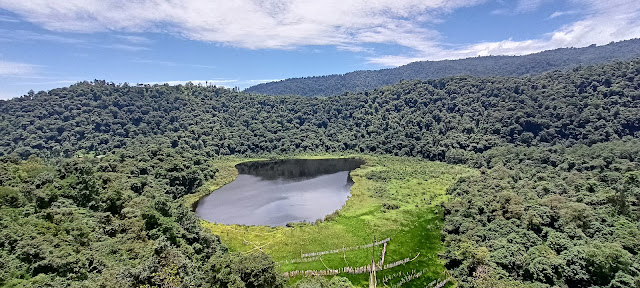
On World Wetlands Day (February 2, 2025), Sikkim’s sacred Khecheopalri Lake was declared a Ramsar site, recognizing its global ecological and cultural significance. This milestone brings global attention to the need for its better conservation, sustainable tourism and scientific monitoring to protect its biodiversity, which faces challenges from the sedimentation and pollution caused due to increased pressure from land-use changes and tourism.
Khecheopalri lake is the first Ramsar Wetland Site of Sikkim.
The Sikkim Government protects the lake and has given it the status of a place of worship.
CULTURAL AND ECOLOGICAL SIGNIFICANCE OF LAKE KHECHEOPALRI
- Khecheopalri Lake, originally known as Kha-Chot-Palri, meaning the “heaven of Padmasambhava”, is located near Khecheopalri village in the West Sikkim district of Sikkim.
- It is believed to be blessed by Padmasambhava (Guru Rinpoche) and Goddess Tara, making it an important spiritual site.
- The lake is sacred for both Buddhists and Hindus and is believed to be a mystical wish fulfilling lake.
- The site is a part of the Buddhist pilgrimage circuit.
- The local name for the lake is Sho Dzo Sho, which means “Oh Lady, Sit Here”.
According to folklore legend related to Sikkim topography, the Khecheopalri is said to represent one of the four plexus of the human body namely, the thorax; the other three plexes are said to be represented by Yuksom (the third eye), Tashiding (head) and Pemayangtse (the heart).
- The formation of the lake is estimated to taken place 3500 years ago.
- The lake is situated amidst pristine forest at an altitude of 1,700 metres (5,600 ft).
- The lake drains a catchment area of the Ramam watershed (Ramam mountain) and has a drainage area of 12 sq km (including area of bog of 70,100 sq m (755,000 sq ft).

- The periphery of lake has the shape of a foot.
- The lake is part of a Himalayan peatland ecosystem and is surrounded by broad-leaved mixed temperate forests.
BIODIVERSITY
- Lake Khecheopalri supports a rich variety of macrophytes, phytoplankton and zooplankton. It is home to several fish species, including Cyprinus carpio (Common Carp) and Danio aequipinnatus (Giant Danio).
- It serves as a resting site for migratory birds from the Trans-Himalayan region, making it an ecologically significant habitat.
- Birds prevent leaves from floating on the lake by picking them up.
- The Wetland is home to diverse bird species like house swifts, fishing eagles and Brahminy kites.
Avifauna
House Swift – The house swift is a small bird capable of flying long distances by alternately shutting off hemispheres of its brain in-flight.
Fishing Eagle
